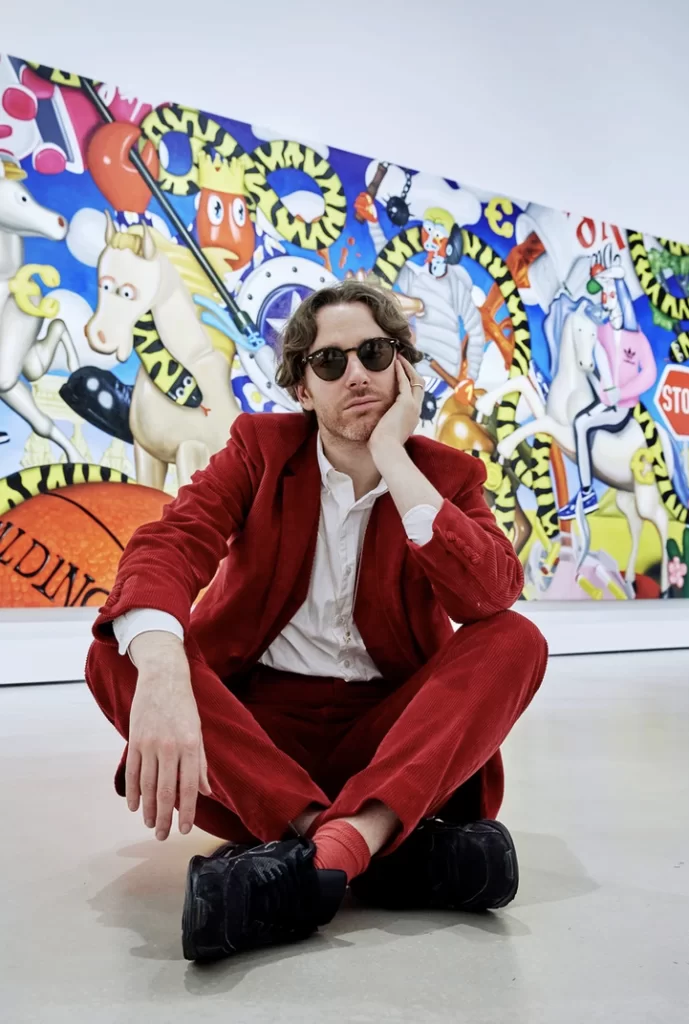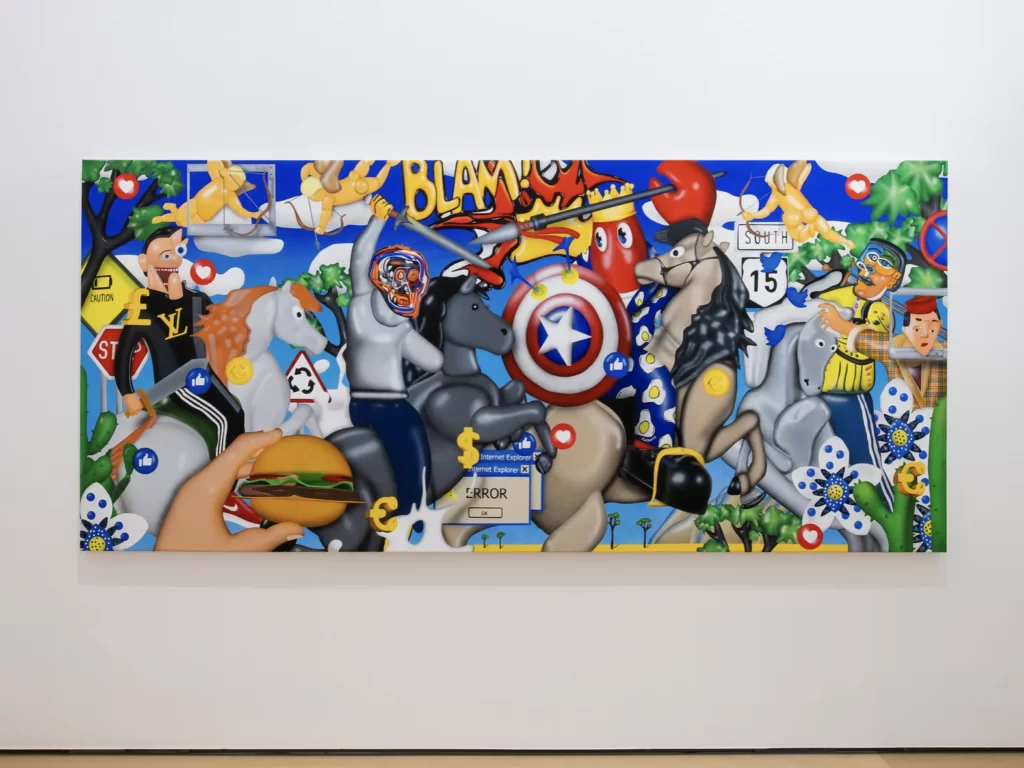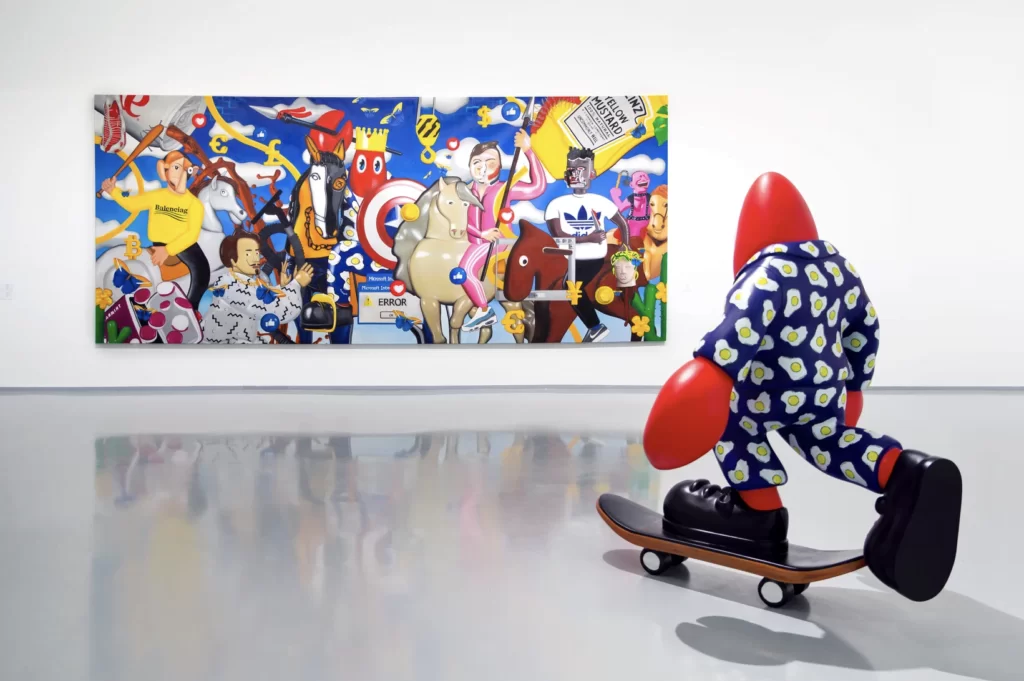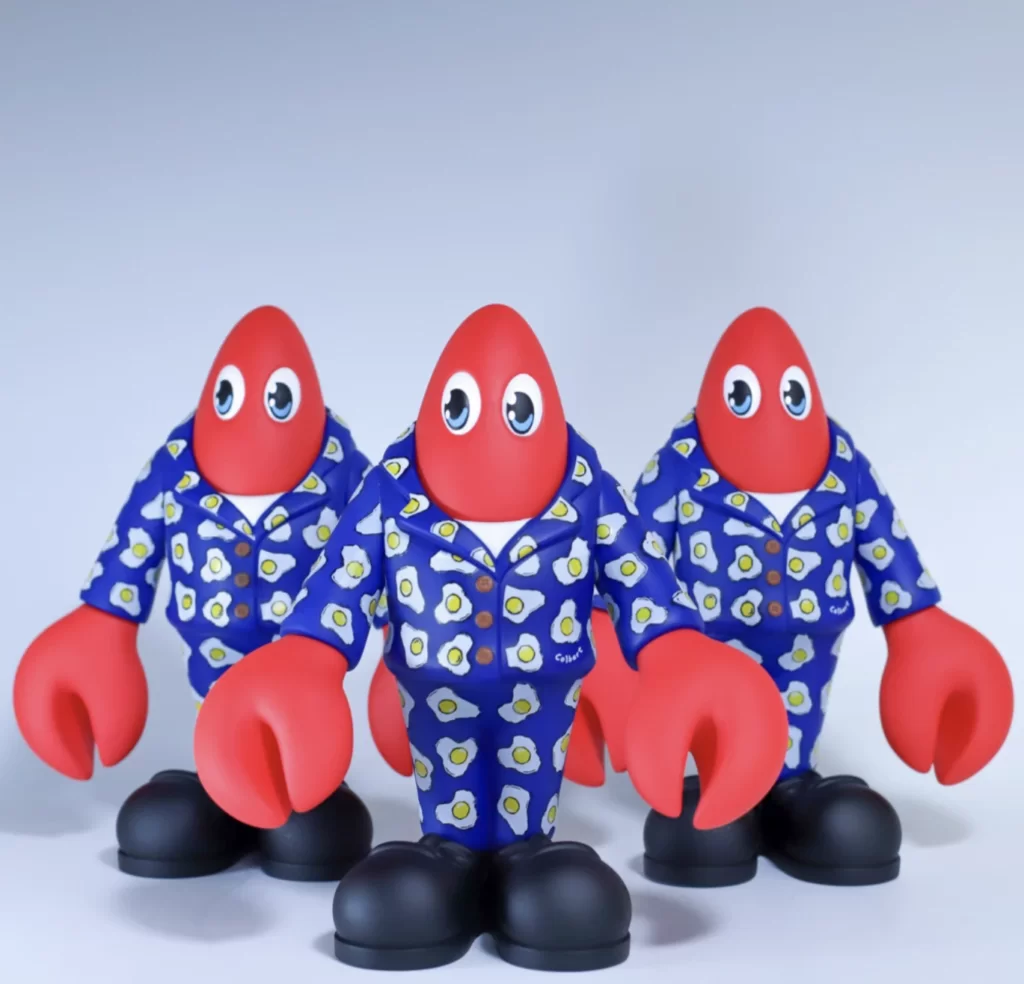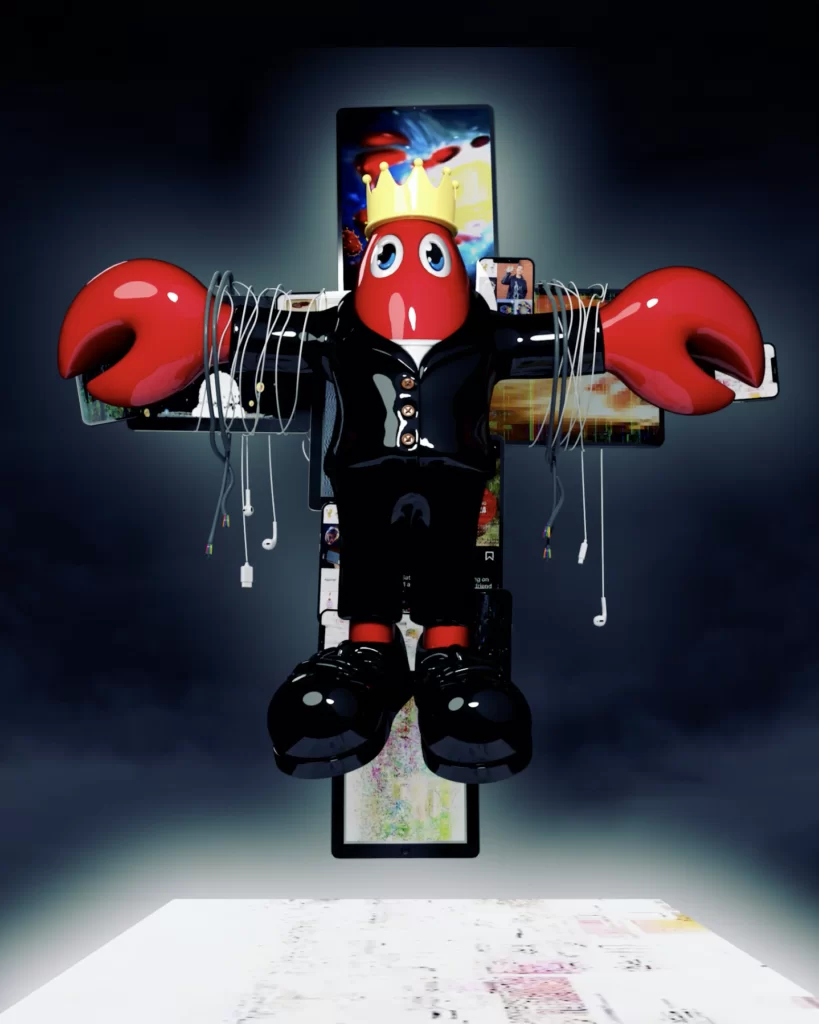Only a few are brave enough to push the boundaries of artistic expression, and Neo pop-surrealist Philip Colbert is one of them; his work spans multiple mediums, including painting, sculpture, and installations.
He draws influence from the old masters fused with his infatuation for consumer imagery and digital media to create surrealist universes that connect digital imagery and the traditional craft of painting. These uncanny and marvellous compositions are an eruption of pop culture references from which Colbert’s always distinctly dressed alter ego emerges, the Lobster that has become synonymous with his work.
Ideally you want to add a chapter that’s a new way of looking at art – a new note of expression that hasn’t been seen before in such a way
Philip Colbert
Once praised by legendary Vogue editor Andre Leon Talley as “The godson of Andy Warhol”, you can understand why. Colbert is the epitome of a contemporary pop artist whose allure has grace many exhibition spaces around the globe. He continuously pushes the boundaries of innovation and creativity with art exploring new mediums with The Lobster as the narrator utilising the rich language of pop culture to embed his artistic expression in art history.
One thing we must recognise Colbert is the Lobster, and The Lobster is Colbert. We managed to catch up with him ahead of his latest project on the groundbreaking Decentraland, a user-owned, Ethereum-based virtual world where you can play, explore, interact and build your own environments, marketplaces, and applications.
Lobsteropolis City Opens On 30th June On Decentraland
Q: For those who don’t know you, can you please introduce yourself?
Philip Colbert: I am the Lobster.
Q: Can you tell us about your creative process?
Philip Colbert: Through my art I’ve been building my own art world where my Lobster persona is the key narrator. That goes across different medium expressions. This includes paintings: I have a process of hyper pop painting where I use a lot of 3D modelling and rendering in order to create a tension between the digital image and the traditional craft of painting. In addition to that, I make sculptures which are an extension of my persona in the physical space. I also work in digital art, which enables me to explore the possibilities of this narrative in a digital space. These are the main strands of what I do.
Q: What is the reason behind your amalgamation of pop culture, iconic symbols and other artists in your works?
Philip Colbert: For me, art is all about language. Artists attempt to create their own dialogue with art history, to add a new chapter into a historic dialogue. Ideally, you want to add a chapter that’s a new way of looking at art – a new note of expression that hasn’t been seen before in such a way. I am very literal about my acknowledgement of art historical language and its regurgitation in the work of contemporary artists. I do this in a hyper state, as I think that’s the state we live in today – we see everything at once.
Q: Throughout some of your works, we see a lobster figure making an appearance. Can you tell us more about this and why you chose a lobster?
Philip Colbert: I have always been drawn to symbols in art and in communication. Symbols engender emotive responses. The lobster is one of the key symbols of surrealism, and it’s also significant in Dutch still life painting.
I felt it had this rich art historical lineage, and it became a kind of protagonist within my art. I don’t think any other artist has raised the flag of the lobster more than me. The lobster was Dali’s muse; I am the lobster. I like to think I have the lobster crown.
Q: You’re about to launch Lobsteropolis City and Lobster Land Museum in the Decentraland Metaverse. How can visitors attend, and what can they expect to experience?
Philip Colbert: Visitors can attend by going onto the Decentraland platform. I’ve partnered with Vegas City, one of the largest districts in Decentraland, which is how I could create my world within a world. My city is located within Vegas City, and James Ashton from Vegas City has been really supportive of this vision. The fact they helped me develop this project is something I very much appreciated.
Q: Your project on Decentraland is the largest to date by a single artist. Do you think other artists and galleries will follow suit?
Philip Colbert: Other galleries are already on Decentraland. What makes mine different is I’m not just presenting an NFT show, I’ve created an artist world in a holistic interactive way, which makes it different from multi artist museums currently on Decentraland. It’s a very popular metaverse and the most important one.
Q: What’s next for the Lobster universe?
Philip Colbert: This event on 30 June is a big experiment for me. I’ve put a lot of work into creating multi strands to it. For example, I’ve created avatars for the American rock band DEVO band who will be performing at Lobster Land Records for the launch. It’s going to be the first avatar concert on Decentraland. I am hoping it feels like the awakening of a new, interactive art world.
Q: Lastly, what does art mean to you?
Philip Colbert: Art is freedom. Regardless of where people are in life, art is an opportunity for people to engage in an ancient dialogue of human experience. It explores the human condition, which is a very particular and absurd situation. The ability to create an artistic identity and explore ideas and take people on a journey is what culture is all about.
https://www.instagram.com/philipcolbert/
©2021 Philip Colbert



